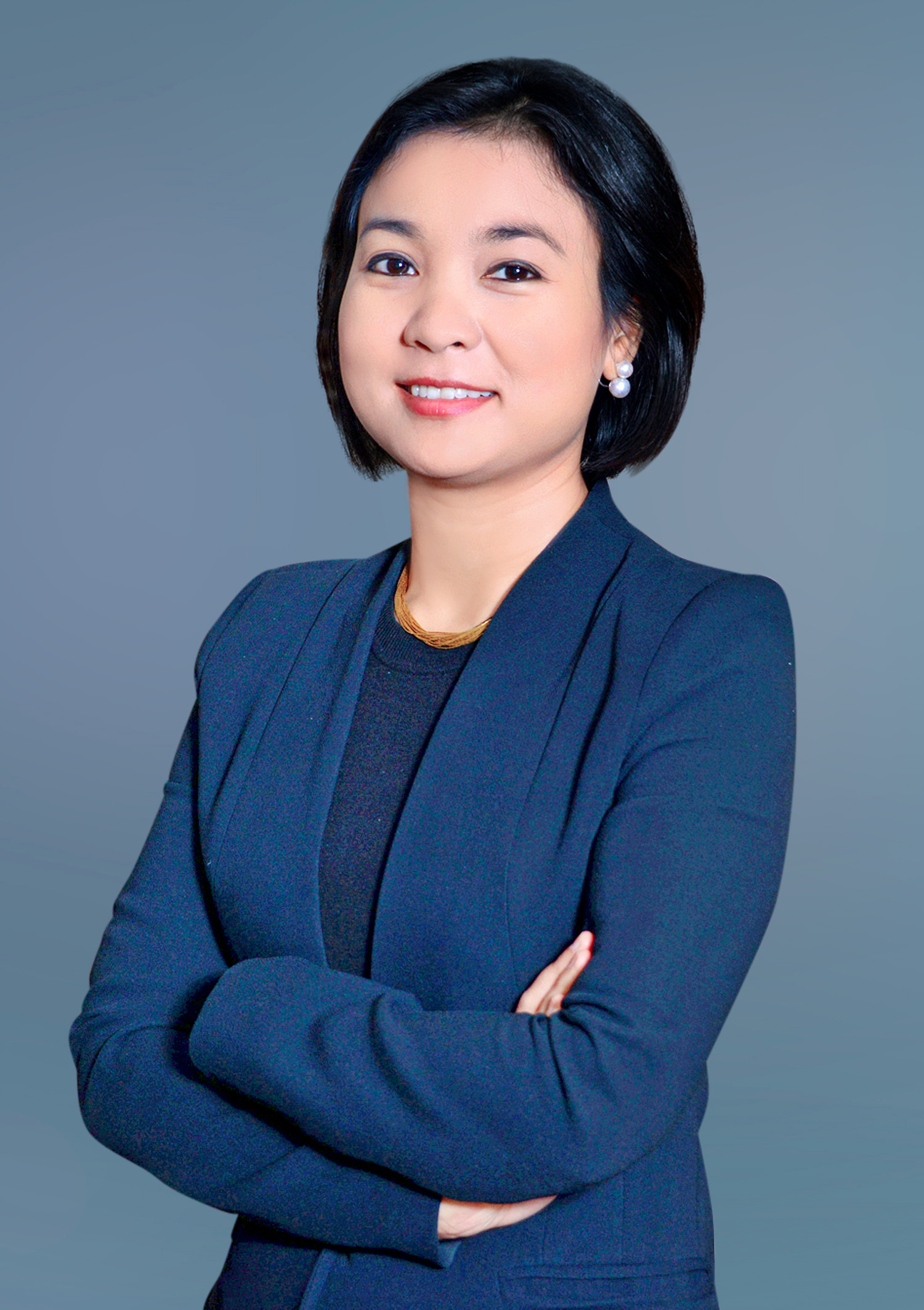Financial inclusion refers to the delivery of affordable financial services to disadvantaged and low-income segments of society. However, as it also involves striking a fine balance between managing businesses’ credit risks and improving customers’ access to credit, different countries have made varied progress in their financial inclusion efforts. To date, across both developed and developing nations, SMEs and individuals still struggle in the face of limited access to adequate financing. Yet there is one country that has made considerable strides in this area: judging from the tremendous success of its microfinance sector, Cambodia seems to have found the sweet spot where businesses can confidently offer affordable loans to low-income individuals—under the watchful eye of the nation’s central bank.
JONATHAN CHANG chats with Serey Chea, Director General of the National Bank of Cambodia, about how careful regulation, financial literacy and technology are key to improving financial inclusion.

Serey Chea
Let’s start with the definition of financial inclusion, because it seems that people have their own understanding of what it is. When you hear the term “financial inclusion”, what does that mean to you?
Financial inclusion is the access to financial services at an affordable price. The “affordable” bit is very significant although most people don’t pay much attention to the part about pricing. Rather than offering financial services to everyone without considering their costs, financial inclusion instead places importance on making a range financial services—including credit, deposit, money transfer and micro insurance—accessible to people at an affordable price.
Why do you think there has been a lot of talk lately about financial inclusion?
Financial inclusion is crucial to achieve equity in society; in other words, it can provide equal opportunity for everyone to access financial services. In the aftermath of the 2008 financial crisis, G20 gave more focus to financial inclusion and made it an item on its main agenda. In developed countries, SMEs’ access to financing is limited, thereby hampering the scale of their contributions to economic development. And in both developing and underdeveloped countries, not only SMEs but low-income individuals find it difficult to get access to adequate financing. As a result, living standards cannot be improved and poverty is not reduced.
Microfinance is usually associated with providing low-income individuals with access to finance. The United Nations declared 2005 as the Year of Microcredit, while Cambodia declared 2006 as its Year of Microfinance. Currently, there are many institutions working to push forward the financial inclusion agenda, including the Consultative Group to Assist the Poor (CGAP) and the Alliance for Financial Inclusion (AFI), among others.
Why do most low-income individuals have limited access to financial services?
By and large, banks only want to finance “bankable people”—those with a steady income or, if not, then at least a property that they can pledge with the bank. Low-income individuals are not bankable because they have very little: they generally cannot afford a large loan, and they usually live in a remote area that is far removed from any conventional banking branch. As such, there is a need for the likes of what we call microfinance institutions (MFIs). Although there is no conventional definition of MFIs, they set themselves apart from typical profit-making finance companies by offering small loans, and being attached to particular social missions.
In your role at the National Bank of Cambodia, what steps are you taking to ensure financial inclusivity?
Presently, the Bank has been very successful in the introduction and implementation of microfinance in Cambodia—in fact, we are among the first countries in the world to regulate microfinance. There have been prevailing global sentiments that central banks should look after the nation’s financial stability instead of devoting so much attention and resources to supervising and regulating microfinance. However, this has been our approach when it comes to financial stability: how much will it impact Cambodian society as a whole versus just the financial system? Even though the success or failure of microfinance won’t have a significant impact on the functioning of Cambodia’s financial system as a whole, microfinance does serve a large customer base here. That is to say, if it does not succeed, there is the potential for social instability— and that is something which we take seriously and want to avoid.
The Bank’s practice of regulated microfinance has also worked very well in terms of boosting investor confidence in what can otherwise be seen as a risky sector involving lending money to people of low income. Unlike in other countries, where the microfinance industry comprises small organisations that operate independently, in Cambodia these companies (MFIs) are regulated by the Bank. For instance, they are required to have a certain minimum capital and to adhere to certain governance systems.
With these regulations in place, microfinance in Cambodia has received lots of funding from foreign investors, especially those with social missions, making it one of the most successful microfinance sectors in the world.
Do you consider empowering women-owned enterprises as a form of financial inclusion?
Yes. Supporting women-owned enterprises is already on our agenda, though interestingly there’s not much work to do in this area. As it stands, in terms of the borrowers in Cambodia’s microfinance sector, 80 per cent consists of women. Moreover, it is usually women who dominate the small businesses here: in a typical Cambodian family, the ladies are the ones who go out and borrow money, and who manage the finances and overall business. However, the challenge, for them, is how to graduate from what we call a “survival business” to one that is profit-making.
I don’t have any specific statistics on this, but from what I have observed in general, the women operate well in “survival mode”—when they’re earning just enough to cover their daily expenses—and relatively few of them want to or have been able to grow their businesses to SME size and beyond.
Do you feel like there’s still more that can be done to increase financial inclusion?
Definitely. It’s an ongoing effort, but there are certain challenges ahead. The microfinance sector has become so large, but customers have not yet caught up in terms of financial literacy, and may not always know what they’re getting into. Moreover, new microfinance companies, especially those that do not necessarily have social missions in mind, have also entered the sector.
In the past, NGOs would transform themselves into MFIs with social missions. More recently, however, microfinance companies are increasingly profit- rather than socially driven, and have private shareholders. There are also predatory organisations out there claiming to be NGOs, and they offer easy loans without much requirement on the borrowers’ part, albeit at very high interest rates.
The Bank is now preparing a national strategy, involving the government agencies, on financial inclusion. For instance, we are working with the Ministry of Education to promote financial literacy among the people through formal education. Additionally, we are running a free camp aign called Consumer Financial Capability Development, which teaches people how to negotiate, choose, use, and communicate if they are in doubt about finance-related issues.
Ultimately, we want people to know that they should not borrow if they don’t have a proper or fixed source of income, and that they should not use financial services recklessly. Finally, this campaign will drive home the message that when it comes to their finances, people should not be passive, but actively communicate with both financial service providers as well as the authorities in charge.
Let’s switch gears for a moment. If you look through the policy lens, what are some of the challenges faced when it comes to pushing the financial inclusion agenda further?
Regulations-wise, most of what is needed is in place. The microfinance sector currently constitutes about 20 per cent of Cambodia’s whole financial system, so we are definitely looking at it more seriously than we used to in terms of its impact on overall financial stability.
Microfinance was previously a small sector in terms of the value, but today it is increasing rapidly. We now have to watch our financial regulations closely, and we routinely supervise these MFIs, though we are careful not to overburden them with regulations. Ultimately, we see them as important vis-à-vis the whole financial system, and want them to be able to continue doing what they are doing, but in a safer manner, considering that their failure can have implications for the overall financial system.
Demand and supply factors are also at play here. While microfinance companies can set up operations in different places, they do not always consider the demand for their financial services—and the level of financial literacy among the people. People from rural areas are usually very intimidated by formally dressed office workers in professional business settings. As such, they might refrain from asking too many questions.
However, as mentioned earlier, the Bank wants to stress to the people the importance of asking questions—e.g. to better understand the terms and conditions of a loan, or to see how different interest rates compare—and that it is the institution’s responsibility to address their queries. The Credit Bureau of Cambodia (CBC), of which I am chairwoman, was set up to reduce credit risks for businesses and to improve customers’ access to credit. It is the world’s first credit bureau that services both the banking and microfinance sectors: besides designing an internal price structure that is fair to all parties (both high- and low-income groups), the Bureau also assesses customers, their credit histories and behaviors, etc., for the benefit of businesses. To this end, it is presently developing a K-Score (or Khmer Score)—a client with a very high K-Score can use it as leverage to bargain for a cheaper loan, and similarly, companies can use the K-Score to more readily identify clients with a good track record of repaying their loans on time, and so on.
There is yet another obstacle standing in the way of better financial inclusion: the lack of affordable rates. Microfinance services are still expensive compared to bank services, and this is mainly because the institutions are operating in remote areas and have very high overheads. For instance, MFIs have to invest more heavily in staff who are willing to travel to rural villages and understand the people’s needs, on top of managing the business side of things.
In the near future, technology may be able to alleviate some of the institutions’ high operational costs, and give rise to more affordable financial services. But for now, we’ll just have to wait and see.
Jonathan Chang was formerly the Executive Director of the Lien Centre for Social Innovation. He is the Harvard Kennedy School Ambassador to Singapore, and a member of the HKS Alumni Board of Directors. Prior to moving to Singapore, Jonathan founded and co-founded four start-ups across multiple industries, including a Y-Combinator incubated social venture, in Silicon Valley and Manhattan. As a Fellow at the Earth Institute of Columbia University, Jonathan taught and conducted research on entrepreneurship as a tool for social change in Rwanda. His other research includes case studies on an impact-investing fund in India for Stanford, a social enterprise in Bali for SMU, and a book on government and innovation with Esko Aho, former Prime Minister of Finland. Jonathan also gave a TEDx talk at Harvard about the importance of a mission-driven life. He earned his degrees from UC Berkeley, Stanford, and Harvard. Connect with him via LinkedIn.








Comments